
Latin American Music Awards
The seventh-annual Latin American Music Awards offered up a sizzling celebration of Latin music alongside an inspiring message of global unity.
Nine Inch Nails closed out their Cold and Black and Infinite North American Tour - and 2018 - with six consecutive shows at the Hollywood Palladium in Los Angeles. The 3,700-person capacity venue held the right kind of space for the wildly popular band - both intimate and grand enough to maintain their polished yet industrial aesthetic.
Being at a Nine Inch Nails show feels exactly like listening to an album sounds, with meticulous production that still bites hard and feels raw, it somehow strikes a seemingly unattainable balance of elements and influences. PAR Cans cast ghostly shadows against a stark fabric backdrop. Lasers danced along the walls and a haze of smoke filled the space between band members and instruments. Used cables that were taken from PRG backstock acted as scenic elements, hanging haphazardly along the circular feature of the theater ceiling.
Trent Reznor, founder, primary musician and songwriter of Nine Inch Nails, is regarded as a genius, perfectionist and an artist who oversees every element of his production and performance. Paul Guthrie is who he trusts with his band’s lighting design.
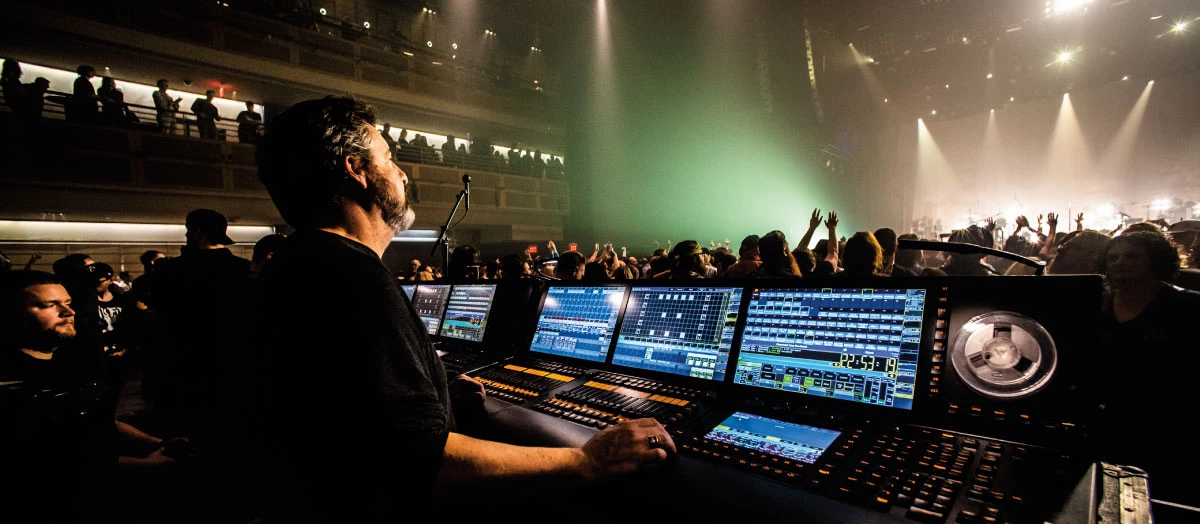
Guthrie, who is also known as Arlo, is one of those people who you immediately feel acquainted with - warm, sharp and full of snark. He went out to help the band when they were in a pinch back in 2013 and has been involved with their productions ever since. Guthrie describes working with Reznor as “intimidating but rewarding - when you don’t screw up.”
Guthrie’s favorite lighting fixtures are “a beat up, old, stubby PAR Can,” or “a GLP JDC-1 in Aggressive Mode.”
You would have seen both fixtures on the Cold and Black and Infinite tour. Aggressive Mode pairs well with Reznor’s driving electronic breaks.
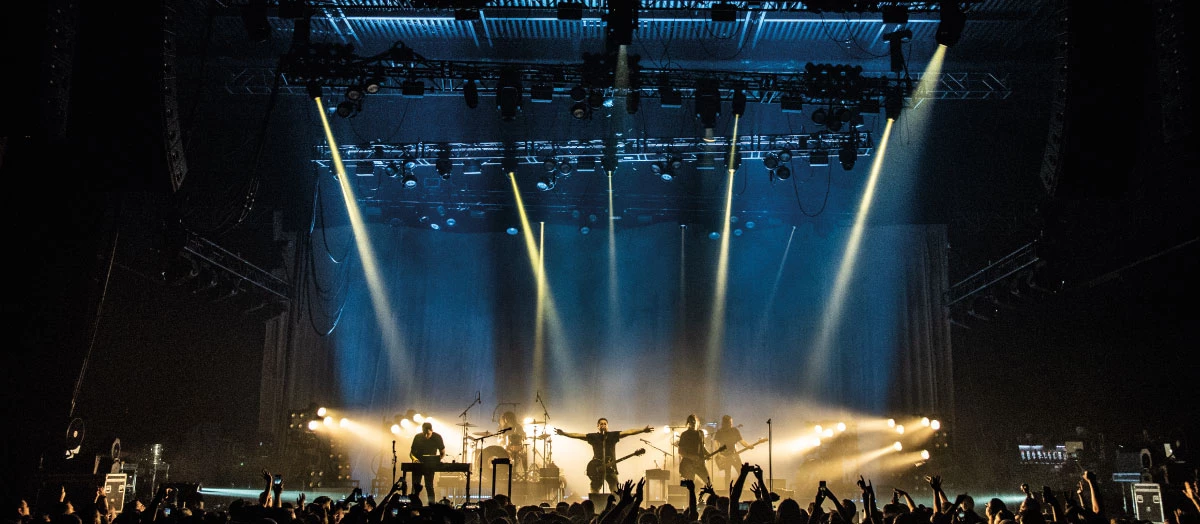
“Trent and Atticus (Ross) wanted PAR Cans, smoke and something that didn’t rely on video screens, gadgets and technology,” Guthrie explains. “Their main inspiration was let’s do the opposite of everyone else. They wanted this entire run to be very adaptable both physically and, in its execution, so we could travel all over the world doing any scale show and turn up and smash everyone’s face.”
In order to accomplish this, he designed moving carts with the fixtures.
“They wanted to feel the heat off the PAR Cans so in some songs we have the carts right up against them on stage,” says Guthrie. “They wanted to be able to do any song, including the 70 in current rotation, at any time without constraints.”
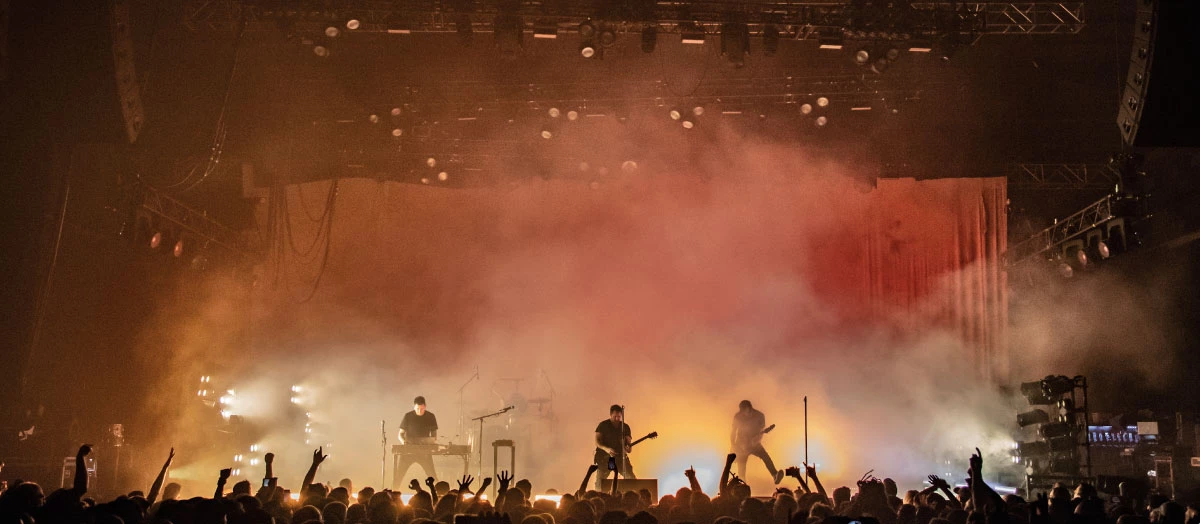
Guthrie did not use timecode, choosing instead to control all the lights live. This, along with the carts, allowed him the freedom to adapt to the ever-changing setlists and the nuance of live performance.
“I love tours like this where I can get in there and really be a part of building the show every night,” he says.
PRG supplied lighting for the Cold and Black and Infinite tour, and has a long-standing relationship providing gear and production services for Nine Inch Nails by the way of Music Group Vice President Curry Grant.
Grant and Guthrie have been working together for more than 30 years and have developed a close friendship in that time.
“We met back when Curry was an account manager for Crowded House,” says Guthrie. “When I got hired to work for Sheryl Crow I became his client. Then when I did my first Fleetwood Mac tour in 2003 he was very much involved. He knew all the necessities for that band, which have always been really complex, so he was a great help to me.”
Grant was Fleetwood Mac’s lighting designer from 1975 to 2002 and continues to manage their touring lighting needs, including the current North American run. Ask him about his successor Guthrie, and he’ll tell you he’s hilarious and incredibly intelligent.
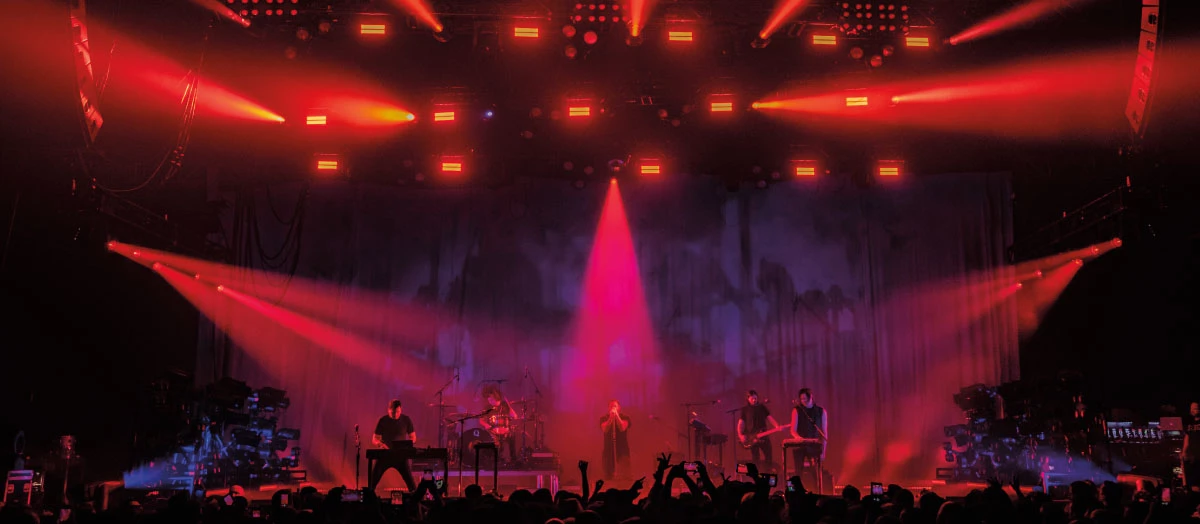
With decades of experience under his belt, Guthrie easily recounts the moment of inspiration that led him on the path to becoming a lighting designer.
“I recently saw Bohemian Rhapsody in theaters and in that shot from behind Freddie Mercury where all of Wembley Stadium is clapping – there was a second there where I was watching and was like, ‘Oh God I’m going to cry.’ I remember being 16 and staying up all night in Melbourne to watch that show because of the time difference. I remember that shot and I remember every hair on the back of my neck standing up. I’d been to a lot of shows, but I hadn’t been to one where someone had that much control or was that staggeringly amazing,” Guthrie recalls. “Then Queen came to Australia the next year and I had the chance to go see the show and look at the ridiculous racks of PAR Cans they had, and I was kind of hypnotized by it.”
Guthrie shares this love of Mercury with Reznor, who has referred to the late icon as one of his greatest influences in multiple interviews.
“I’m a musician myself and when I started doing gigs, I did live music,” Guthrie continues. “I loved the idea that I could do something that had an effect on the music without being a performer. That’s what drew me in.”
Now that the Nine Inch Nails tour has wrapped, Guthrie is already busy working on something totally different - the Red Bull Crashed Ice sporting event in Boston that will take place on February 8th and 9th.
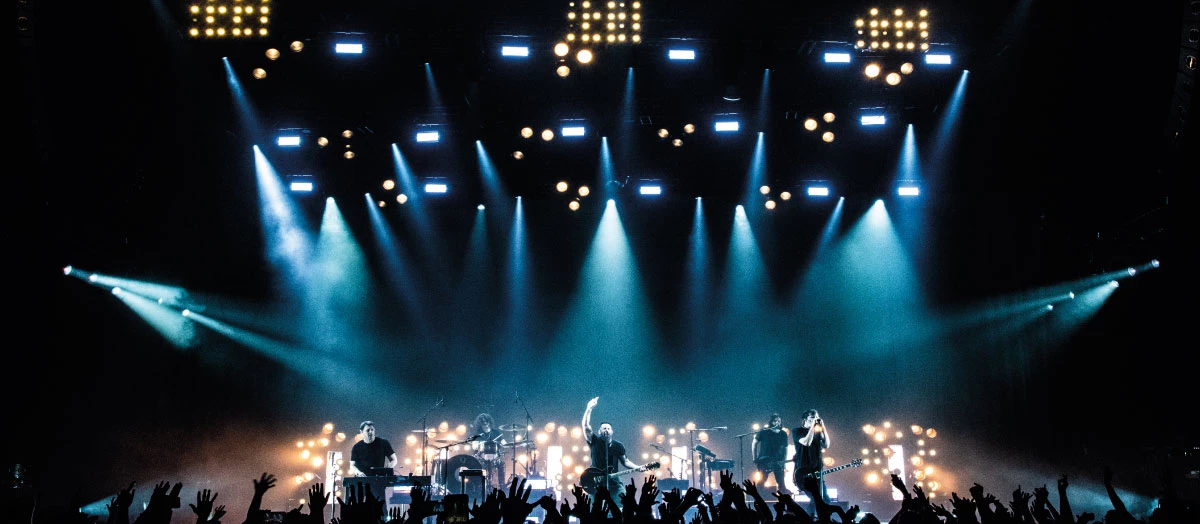
“I always enjoy getting a job that no other gig I’ve done has prepared me for. It’s fun to do something different,” he says.
Looking out to the future of his field, Guthrie is most interested in self-programming consoles.
“I will be excited when the computers are helping us and not getting in our way. GDTF is a great idea that I hope gets implemented and adopted.”
General Device Type Format (GDTF) is an open data format to help streamline the process of linking a fixture profile from CAD through previsualization and onto a console. It was developed to change the way lighting designers and programmers work and makes lighting fixtures, visualizers and consoles work together in a more seamless way by utilizing a standard format.
“When I explain to any of my younger friends in IT that we still have 512 channels per universe they ask if the lights are made of stone. Or if our network settings are on loan from the Smithsonian.”
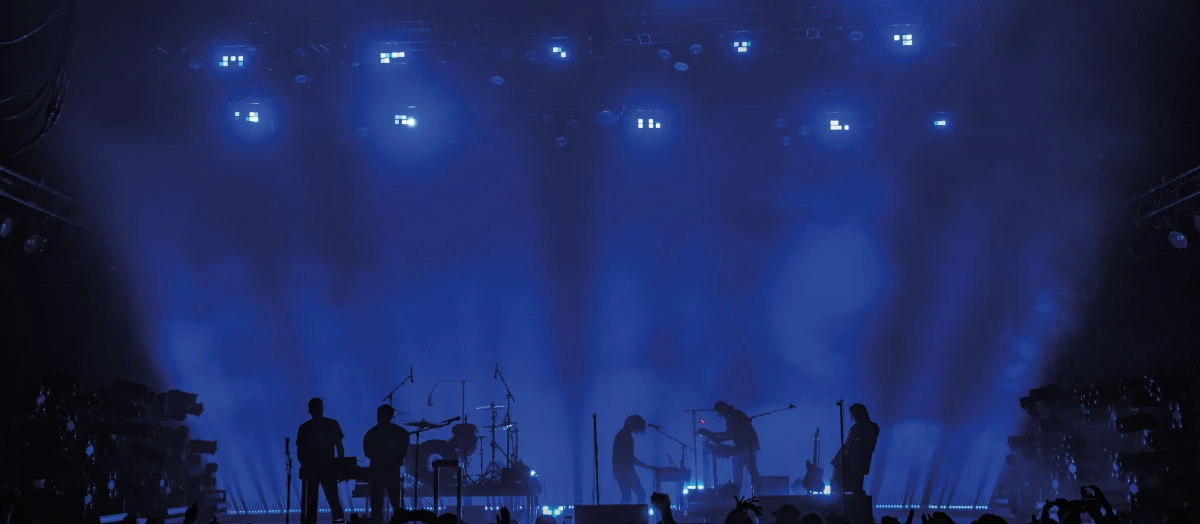
Written By: Erin Bates
Photo Credit: Brian Friedman